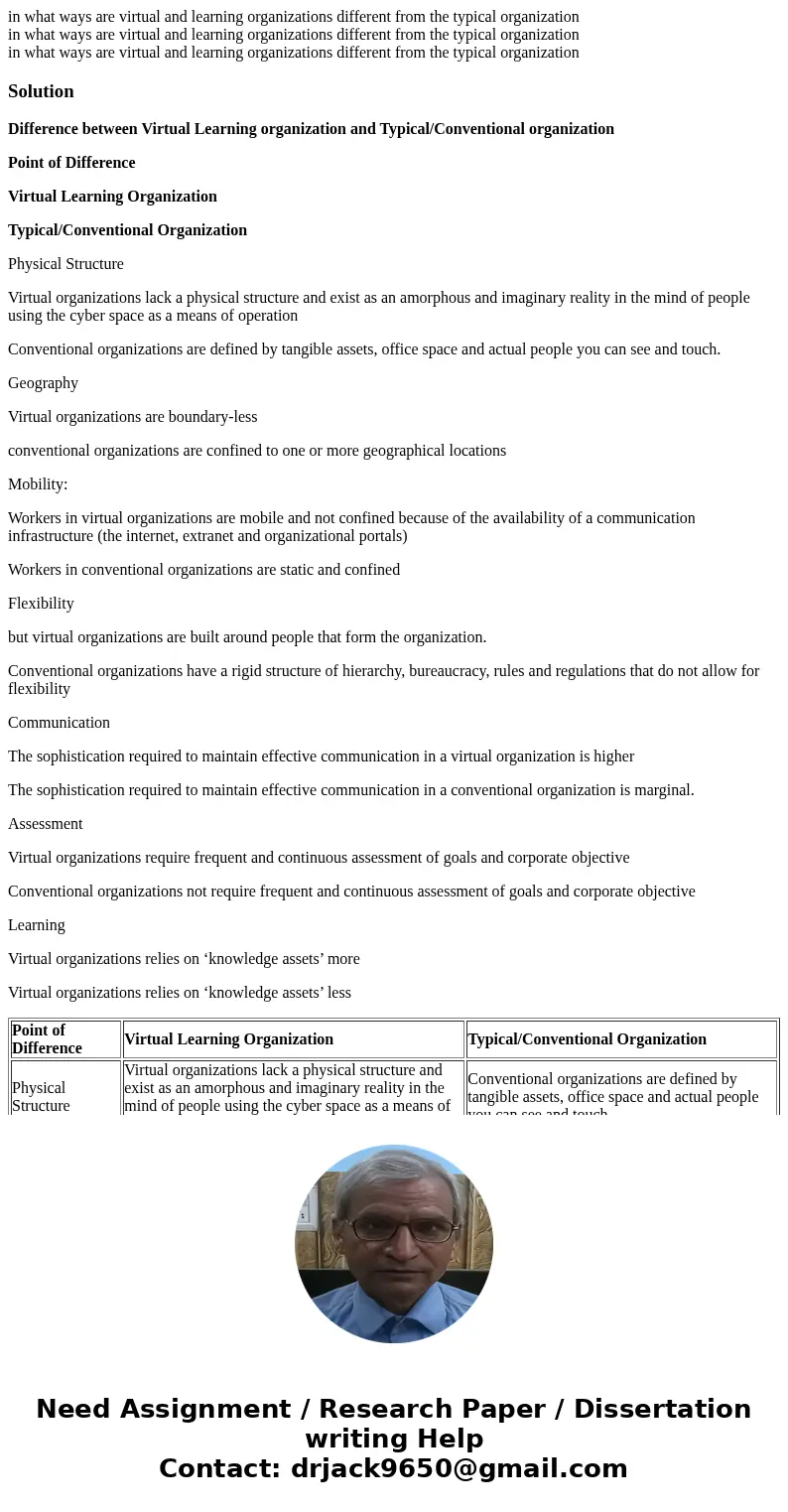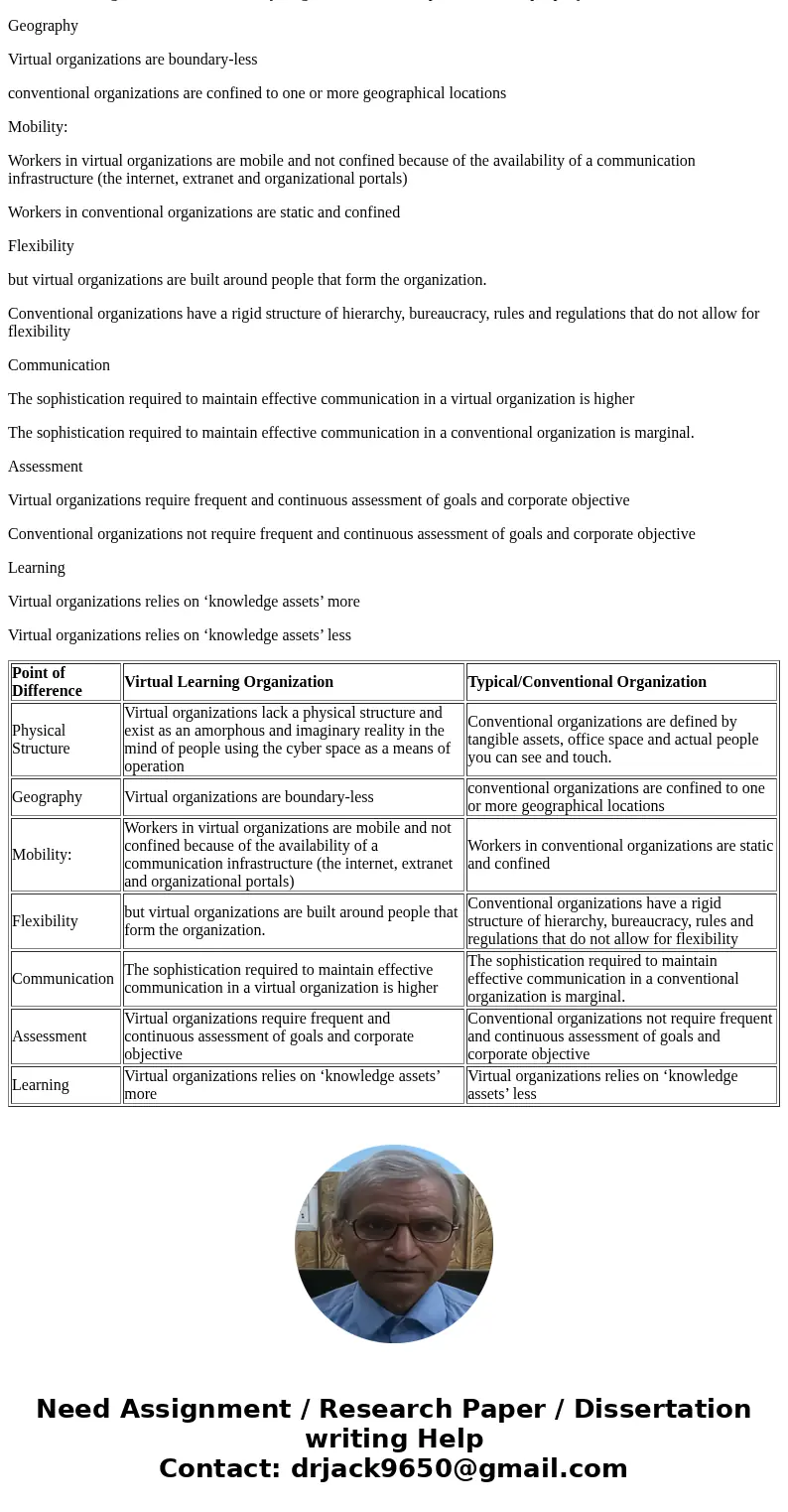in what ways are virtual and learning organizations differen
Solution
Difference between Virtual Learning organization and Typical/Conventional organization
Point of Difference
Virtual Learning Organization
Typical/Conventional Organization
Physical Structure
Virtual organizations lack a physical structure and exist as an amorphous and imaginary reality in the mind of people using the cyber space as a means of operation
Conventional organizations are defined by tangible assets, office space and actual people you can see and touch.
Geography
Virtual organizations are boundary-less
conventional organizations are confined to one or more geographical locations
Mobility:
Workers in virtual organizations are mobile and not confined because of the availability of a communication infrastructure (the internet, extranet and organizational portals)
Workers in conventional organizations are static and confined
Flexibility
but virtual organizations are built around people that form the organization.
Conventional organizations have a rigid structure of hierarchy, bureaucracy, rules and regulations that do not allow for flexibility
Communication
The sophistication required to maintain effective communication in a virtual organization is higher
The sophistication required to maintain effective communication in a conventional organization is marginal.
Assessment
Virtual organizations require frequent and continuous assessment of goals and corporate objective
Conventional organizations not require frequent and continuous assessment of goals and corporate objective
Learning
Virtual organizations relies on ‘knowledge assets’ more
Virtual organizations relies on ‘knowledge assets’ less
| Point of Difference | Virtual Learning Organization | Typical/Conventional Organization |
| Physical Structure | Virtual organizations lack a physical structure and exist as an amorphous and imaginary reality in the mind of people using the cyber space as a means of operation | Conventional organizations are defined by tangible assets, office space and actual people you can see and touch. |
| Geography | Virtual organizations are boundary-less | conventional organizations are confined to one or more geographical locations |
| Mobility: | Workers in virtual organizations are mobile and not confined because of the availability of a communication infrastructure (the internet, extranet and organizational portals) | Workers in conventional organizations are static and confined |
| Flexibility | but virtual organizations are built around people that form the organization. | Conventional organizations have a rigid structure of hierarchy, bureaucracy, rules and regulations that do not allow for flexibility |
| Communication | The sophistication required to maintain effective communication in a virtual organization is higher | The sophistication required to maintain effective communication in a conventional organization is marginal. |
| Assessment | Virtual organizations require frequent and continuous assessment of goals and corporate objective | Conventional organizations not require frequent and continuous assessment of goals and corporate objective |
| Learning | Virtual organizations relies on ‘knowledge assets’ more | Virtual organizations relies on ‘knowledge assets’ less |


 Homework Sourse
Homework Sourse